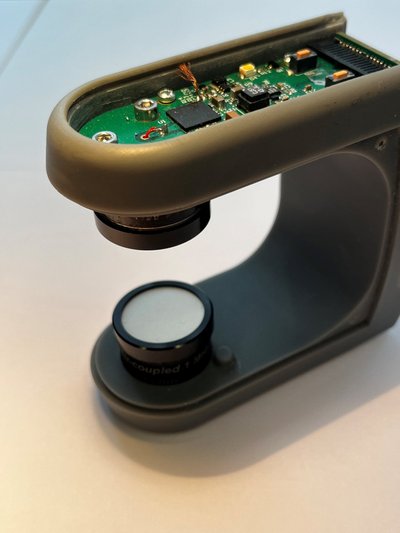Linas Svilainis, a professor at KTU Faculty of Electrical and Electronics Engineering and one of the authors of the invention says that the idea to create the device came from the cooperation of KTU and Spanish National Research Council (CSIC) researchers.
Monitoring the physiological status of plants is an important step in protecting plants from harmful effects and achieving better yields. However, existing methods for assessing plant status are damaging to the plant and in many cases require a long wait for results. The new device is non-invasive and uses non-contact ultrasound on an uncut leaf for measurement.
Scientists from the Spanish National Research Council (CSIC) and Agri-Food Research and Technology Centre of Aragon (CITA) have figured out how to use ultrasound to assess the impact of drought on plants. The initial application was for vine trees but later it turned out to be applicable to other plants.
European vineyards are suffering from drought
Vine trees are particularly vulnerable to drought due to their shallow root system and limited ability to extract water from the soil. Vine trees that suffer from water shortages have lower yields. Moreover, drought changes the composition of the grapes produced – it can affect sugar and acidity levels, which determine the quality and taste of the wine. For these reasons, and to avoid the other extreme of overwatering the vine trees, it is necessary to monitor these plants and regulate watering.
European vineyards, which produce more than 50% of the world’s wine, were already suffering from hotter and drier than normal conditions in 2022, putting as many as 18% of European vineyards at risk of drought. This year, the Spanish Ministry of Agriculture, Food and Fisheries is also worried, predicting that Spanish wine production will fall by more than 20% compared to last year, due to the prolonged drought plaguing growers across the country.
"The device developed by our team can extract mechanical properties from ultrasound measurements, allowing plant scientists to analyse the physiological state of plants," says Prof. Svilainis.

The device consists of two transducers, one of which acts as a loudspeaker sending the signal and the other receives it as a microphone. Anything that comes between them changes the signal.
"Based on the change that has taken place, we can determine the mechanical properties of an object, in this case, a plant leaf," explains Svilainis.
The palm-sized electronic device generates ultrasound, receives signals, and transmits data to a smartphone. Geographic coordinates and photos are attached to the sensor data and sent to the cloud storage. Distribution maps and time graphs of plant traits are generated using cloud computing technologies.
The resonant frequency, thickness, density, and attenuation of the plant can be measured by ultrasound using the instrument. "Researchers from Spain have demonstrated that these measurements correlate with parameters that indicate the plant’s physiological state, namely water potential and relative water content, which are used to assess the drought stress," adds the professor.
A non-invasive solution for plant analysis directly in the field
"A lot of work had to be done to implement such an idea and make field measurements possible," says Svilainis.
He adds that although the device is unique, it is not the only one to measure similar plant characteristics. "The difference is that instead of, for example, threading a pressure sensor into a plant trunk, we use a non-invasive, non-contact technology. In addition, it is light, convenient, and results are obtained immediately. Using other devices, the leaves have to be cut and taken to the laboratory, which takes time, but here we can get the results right in the field," says the professor.
Svilainis is quick to remind that a plant is a living organism, so figuring out how to measure its characteristics in field conditions was not an easy process. The level of substances in it varies depending on air temperature, sunlight, and humidity. "For example, ignoring temperature changes can lead to measurement errors of up to 30 per cent," explains the professor.

Instead of using traditional thermometers, which are too slow to detect instant temperature changes, he says, the state of the air is measured by using the delay time of ultrasonic signals that travel between transducers. "This delay is used to estimate the speed of sound, which correlates with the air temperature and humidity, and this makes the measurements more accurate without the need for additional sensors," concludes Svilainis.
The device is now complete, and the result has been presented at several conferences of biodiversity experts. The invention has been granted a Lithuanian patent and the application has been submitted to the European Patent Office, business interest is also expected.
The device is designed for large leaves (more than 3 cm in diameter), which are flat enough to completely cover the transducers, but in the future the invention can be developed further for other plants, disease control, or industrial materials, for example, films measurements.
